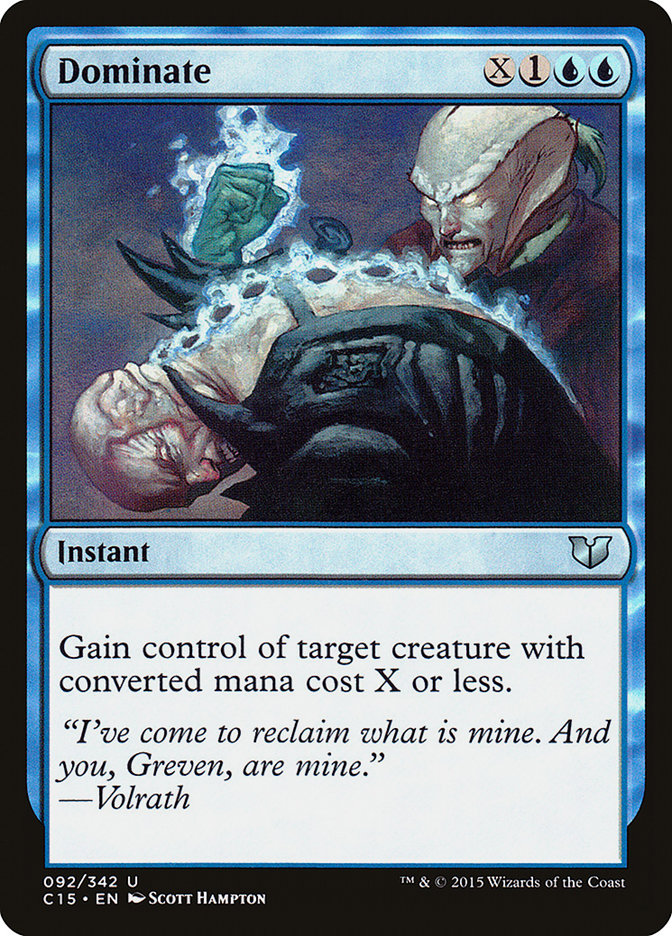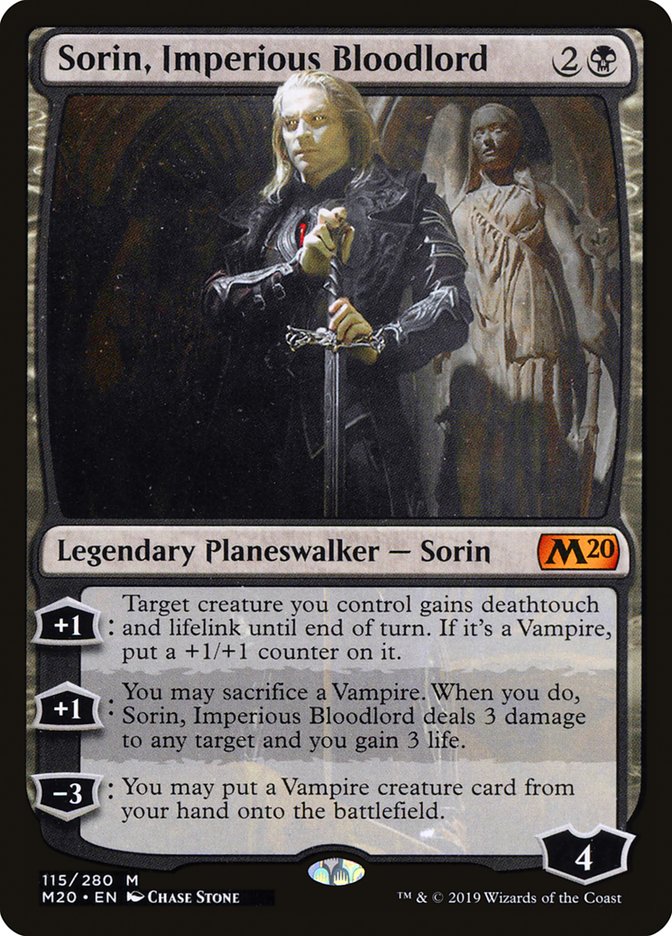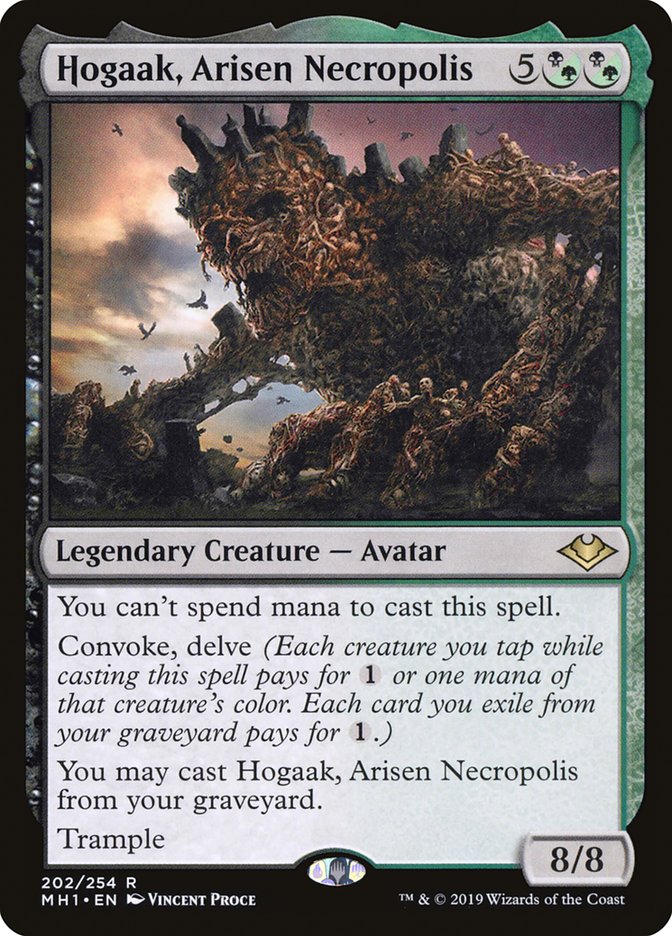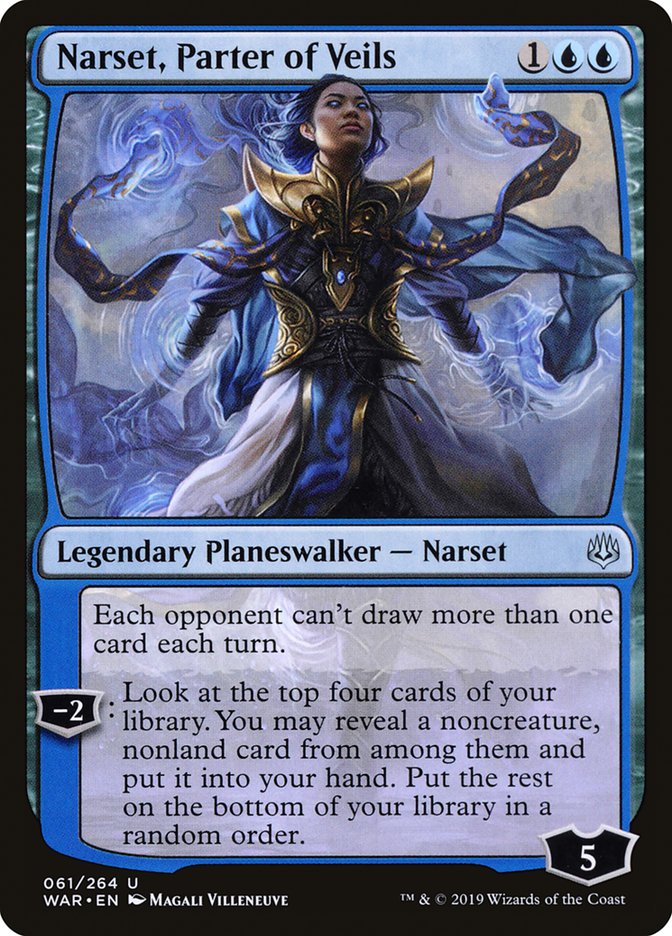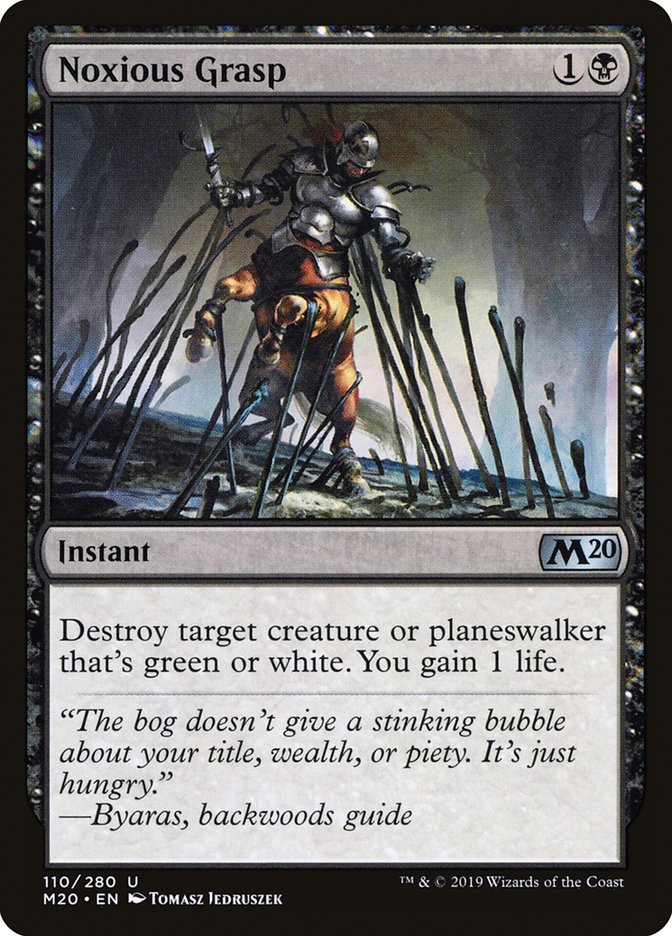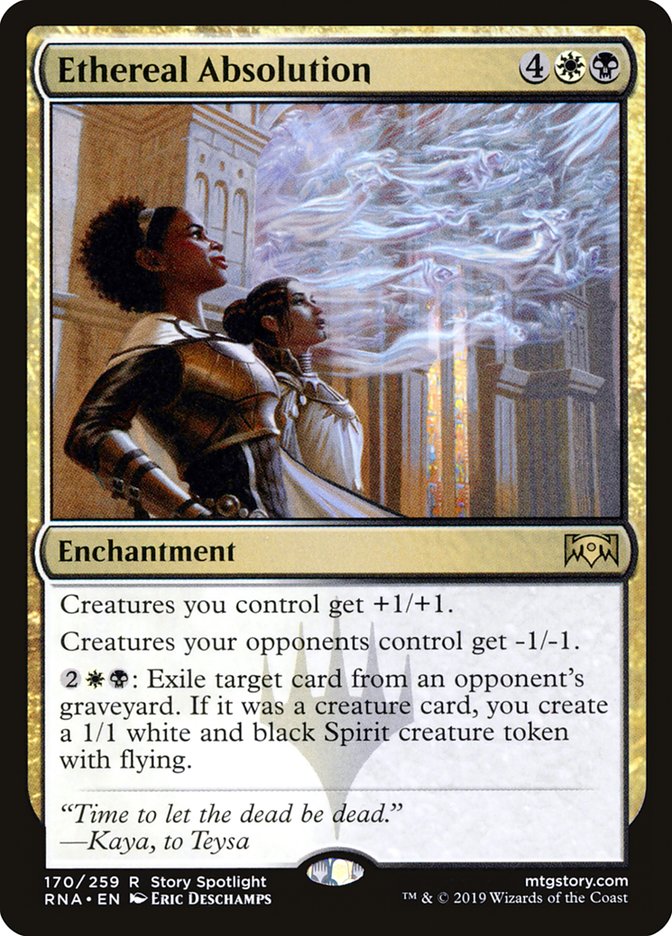With the maximum amount of legal sets, Standard should reek of uniformity. Formats can become stale with the same powerful cards dominating, which is why set rotation is vital. Legacy and Modern do not go through the financially painful changes that Standard does once a year, but those formats aren’t nearly as popular around the world. Most players, competitive and casual alike, enjoy battling with the newest cards in a variety of settings. From Friday Night Magic to the Mythic Championship, a healthy Standard continues to grow the brand.
At the end of most Standard formats, there are usually one or two decks that dominate. This is due to the puzzle beings solved, with players that have crafted the best possible configurations to handle the lesser threats that are legal in the format. This isn’t as easy to do in the eternal formats, where the card pool is very deep. In Legacy we see new decks rise and fall regularly, as the format can correct itself with an array of powerful options that aren’t legal in the other formats. I love Legacy, but I am fully aware it isn’t the most popular format. The cost is the main barrier to entry and keeps the crowd to a loyal few. Standard is relatively cheap and even more so with the popularity of MTG Arena. With a lower entrance cost and a digital option, the Standard business is booming when the format is healthy.
Standard is great right now, and it saddens me a bit that the format will change completely soon. I am not used to a healthy Standard in the last few months before set rotation. It is difficult to explain why this is the case, except for giving kudos to Wizards of the Coast for balancing out the sets effectively this last year. I am shocked that a card like Teferi, Hero of Dominaria isn’t running the streets and that Sorin, Imperious Bloodlord may be more powerful now. That is a testament to the representation of the different archetypes: aggro with Orzhov Vampires, midrange/control with Esper Hero, ramp with Bant Ramp, and combo with Bant Scapeshift. There are other decks that compete within this array of powerhouses and have a chance to do some real damage in the final few tournaments they are legal in.
With these different archetypes alive and well, it became difficult for me to choose where to start. I have seen an uptick in the amount of Esper Control, with some MPL players pushing it this past week. After extensive testing, I do not believe that it has a fighting chance in the current format. Depending on Teferi, Hero of Dominaria to win the match by itself is a pipe dream, one that I have chased for the better part of the summer. The harsh reality is that we need creatures to protect these busted planeswalkers that exist, and mainstream Esper Control doesn’t provide that.
With Esper Control not being a viable option, I turned my energy to the Bant Scapeshift deck that everyone was raving about. The hype was real, as I was able to maneuver through the metagame, beating aggro and midrange decks easily in the first week. As many other competitive players discovered, players adapted to defeat this deck and did so successfully. Bant Scapeshift is still Tier 1 and terrifying, but it isn’t the unbeatable force it was at its conception. A new king wears the crown.
Orzhov Vampires is without a doubt the strongest deck in Core Set 2020 Standard now. I must emphasize the time stamp on this one, as the format has plenty of answers to make this deck drop a few pegs. Core Set 2020 Standard is so healthy with a robust card pool, which makes for heavy metagame shifts in response to a dominating deck. This is likely to happen after the team tournament this weekend as the SCG Tour hits my stomping ground of Richmond. Unfortunately, decks that I gravitate toward have issues defeating decks like this.
When Standard aggro decks are linear, I can easily craft a version of control to destroy them. Orzhov Vampires is anything but, with the capability of playing three creatures by the second turn, or simply having a resilient threat into a planeswalker. Even when their aggressive start is thwarted, they can have a Champion of Dusk to bury me with card advantage. The Orzhov Vampires sideboard is equipped with disruption, clean removal for the typical control planeswalker package, and Gideon Blackblade, effectively making my style of decks a very poor choice. There is, however, one hero to help provide an option to those of us that need to cast Teferi, Hero of Dominaria in order to feel whole.
Creatures (10)
Planeswalkers (8)
Lands (26)
Spells (16)

I will be teaming with Brian Braun-Duin and Pete Ingram this weekend in Richmond. My Esper brother decided to fly across the country to join me in battle, so I had to delve into his pet deck for some Core Set 2020 Standard testing. Coming off a recent team victory last month at the Philadelphia Open, I was ready to display some of that Azorius Control magic once again in the Modern seat. After getting berated over several chat sessions, I decided to put down the Celestial Colonnade and investigate the mess that is Modern.
I borrowed Pete’s Hogaak deck to get a few sample hands and realized that I have never cast, controlled, or heavily interacted with anything in the deck. Having me pilot this would result in many losses and a stubborn control mage uttering under his breath that he should have played Jace, the Mind Sculptor. I pitched the idea to BBD to play some Esper Hero in the Standard seat and he gave me his blessing. After that, I began my Esper Hero journey on MTG Arena and with some live testing.
This version of Esper Hero that BBD played in the Fandom Legends tournament is a result of hours and hours of discussion we had through our team chat. We both realized that Deputy of Detention makes Bant Scapeshift a very easy matchup and we shuffled a few into the maindeck for that very reason. The card is lackluster in other situations, but the presence of that deck is great enough to warrant two copies to start.
Having one of the best players in the world to bounce ideas off was very helpful. We played nearly identical lists for the last three weeks, but the differences became contentious debates. It took nearly an Act of Congress to get me to remove my copies of Narset, Parter of Veils in the maindeck; however, my buddy was spot-on about it. With Orzhov Vampires currently being the best deck in the format, it isn’t feasible to spend precious turns and mana to dig for medium spells Game 1. Before sideboard, there isn’t much to dig for that can save you from imminent demise.
Narset, Parter of Veils gets much better after sideboard. In Game 1, we’re running around with ten creatures and still getting upset when there isn’t a hit with our planeswalker activation. The passive ability is still deadly, but the number of matchups where it applies has decreased. There are too many powerful cards that simply put things onto the battlefield or directly into hand, weakening the passive along the way. With the few negatives presented, it makes perfect sense why it finds a home in the sideboard.
The other big debate topic was the removal package in the maindeck. I’m very old school, and back in my day, I didn’t utilize hate cards in the maindeck, but the two Noxious Grasp and two Dovin’s Veto come from my influence, knowing that it is important to have some answers to the most damaging spells that still exist in Core Set 2020 Standard.
Although players aren’t jumping on board the Teferi, Hero of Dominaria train as often, there will be a significant portion of the competitive scene embracing Esper Hero. Not having ample answers to the planeswalkers in the mirror can result in an easy Game 1 loss, especially if players are still using the old technology of Command the Dreadhorde or extra planeswalkers. Having early access to Dovin’s Veto gives a huge edge in the mirror, to answer threats that escape a fast start or a Thought Erasure. Noxious Grasp is the ultimate backup card, knocking out most resolved threats in the mirror while having a long reach across the Standard metagame.
There is always a chance I look foolish against my Mono-Red Aggro opponent as I stare at two copies of a card that can only target a green or white threat. That is unlikely to happen this weekend in Richmond. The room will be populated by Bant Scapeshift, Bant Ramp, Orzhov Vampires, Esper Hero, and Jund Dinosaurs. I am confident that this version of Esper Hero, armed with maindeck Noxious Grasp, can defeat four out of the five decks listed with ease. Orzhov Vampires will be difficult to take down, but the sideboard is ready for the challenge.
In the current list, we were testing Ethereal Absolution, Golden Demise, Devout Decree, Disfigure, and Kaya’s Wrath as our antidote for this aggro virus that has infected the metagame. BBD pointed out that Golden Demise is just better than Cry of the Carnarium currently and he was correct. There aren’t many creatures that require exiling that have two or less toughness. The days of Scrapheap Scrounger are over, making the Infest with upside a strong replacement. There were many games where I was able to keep my Hero of Precinct One army intact while eradicating the opponent’s forces. It won’t happen often, but it is an easy upgrade for those few situations.
Disfigure, Devout Decree, and Kaya’s Wrath are more traditional sideboard options for Esper Hero connoisseurs. Adanto Vanguard haunts my dreams after these weeks of testing, requiring special removal. The traditional battlefield sweepers don’t work on this Vampire, which is why Disfigure and Golden Demise are vital to the gameplan. It prompted us to play appropriate removal for it Game 1 but found that it weakened other matchups too often. Having one or two Moment of Craving floating around in the maindeck does not boost the win percentage enough against Orzhov Vampires. These very conditional removal spells did cost us games when drawn against large threats, making the sideboard the only home for them.
Ethereal Absolution is the unique haymaker that came from some dark corner in BBD’s twisted mind. When he pitched it as an answer to the Orzhov Vampire problem, he knew I was going to buy in without even trying it out. Ethereal Absolution has that Curse of Death’s Hold feel, taking me back to a wonderful Standard while I was in my prime. One of the few times that BBD defeated me back then, I was playing a deck centered around it, and I knew he found extra joy with that connection.
After giving it the old college try, I can say that I’m not sold. There are times where it completely obliterates the opponent, but I felt that I was going to win with any six-mana haymaker. We discussed a few cheaper answers that didn’t get hit by Noxious Grasp and landed on God-Eternal Kefnet. This is a prime option because it lands in a relatively unused slot on the curve, blocks well, pressures enemy planeswalkers, and dodges their removal after sideboard. I’m torn between this, Ethereal Absolution, or Liliana, Dreadhorde General. This will be a game-time decision, as the six-mana options can be brought in against other decks as well, whereas God-Eternal Kefnet isn’t as flexible.
Esper Hero has been a blast to test with. I’m also very happy that I stuck BBD with Modern and Pete gets to play the format that requires some intense, long rounds. With the power of Teferi, Hero of Dominaria, for the short time I have with it in Core Set 2020 Standard, let’s see if we can win back-to-back team titles on the SCG Tour!


